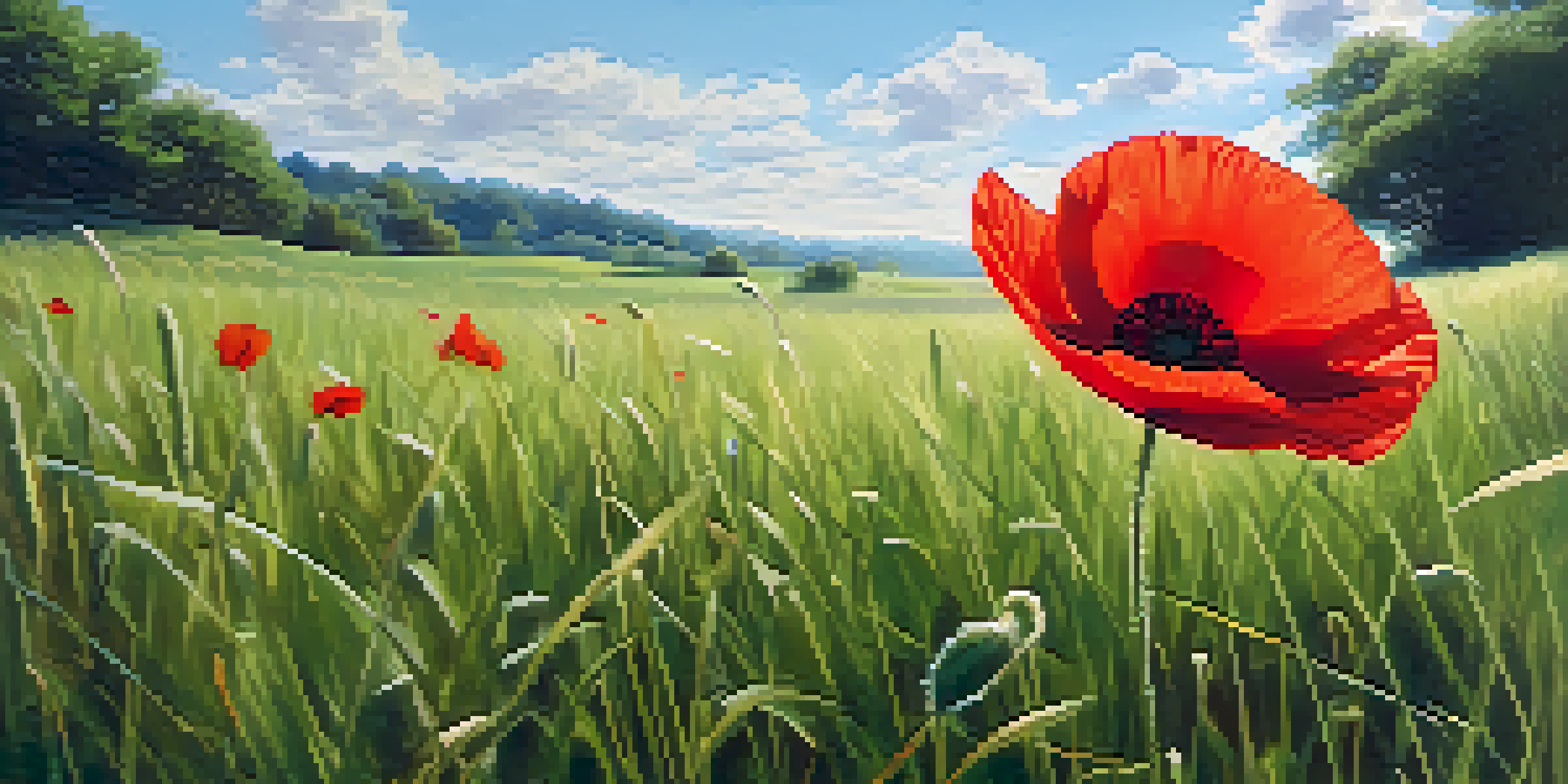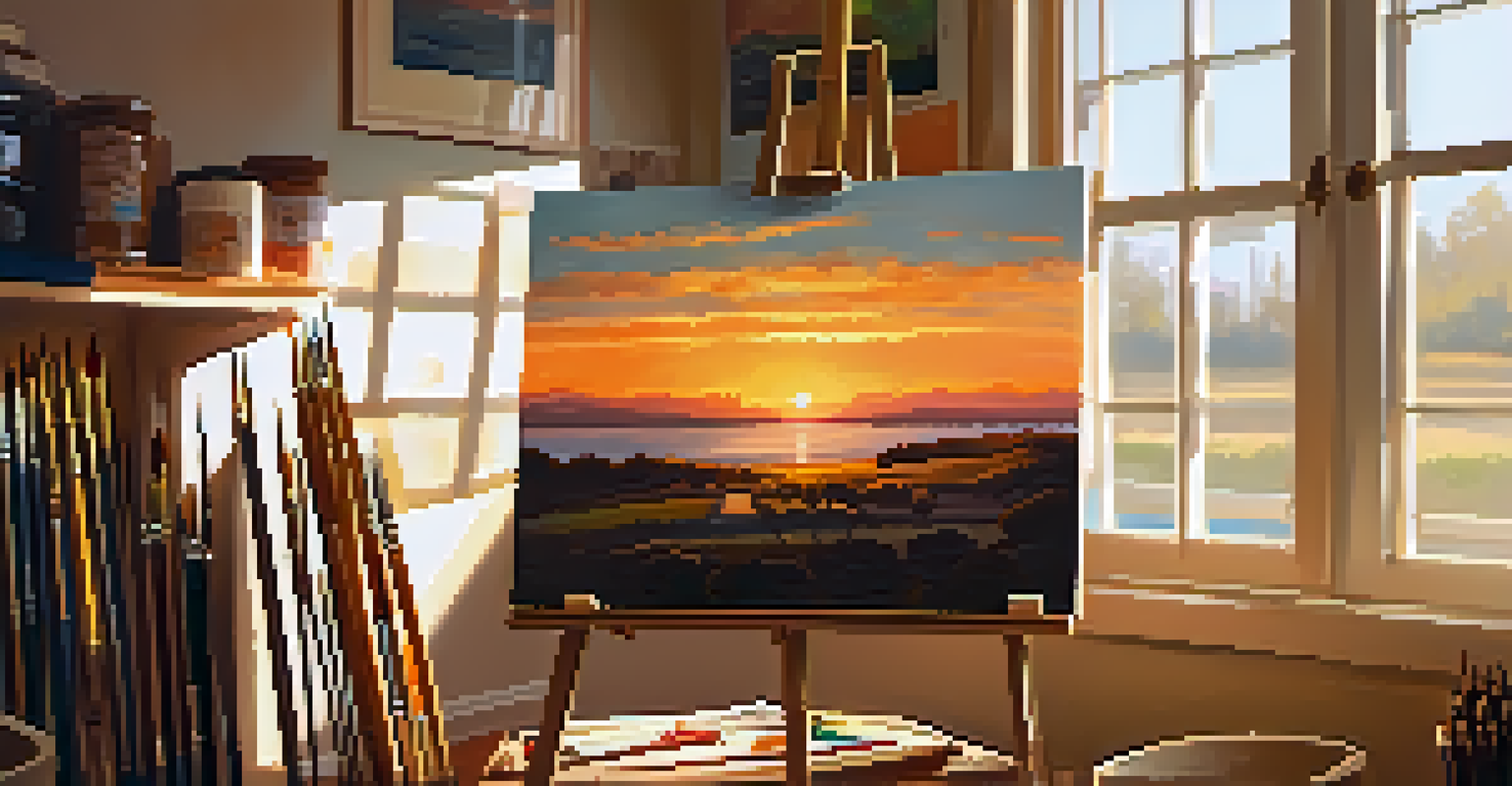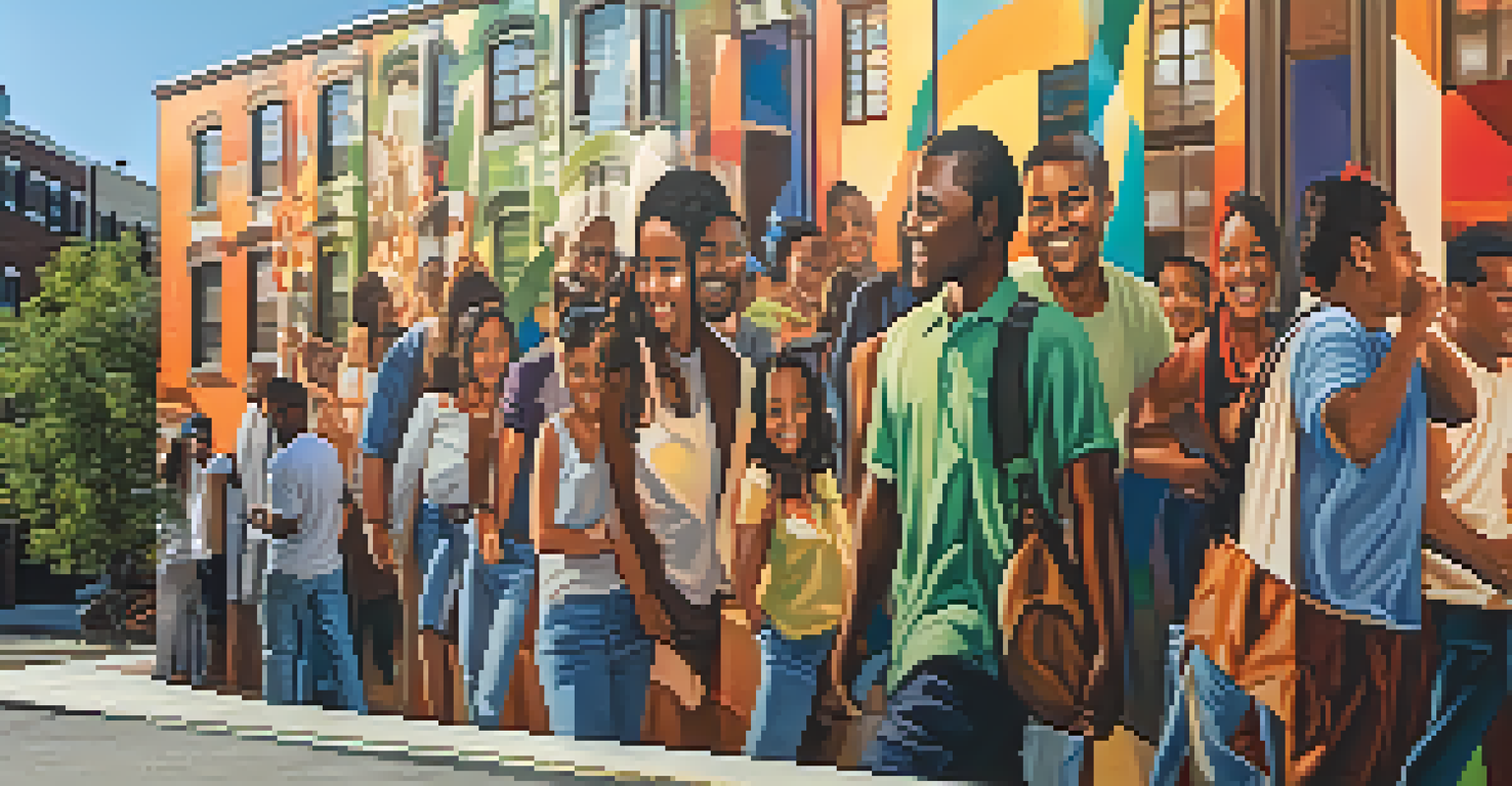Exploring the Role of Art in Shaping Personal Memories Today

Art as a Catalyst for Memory Formation
Art has an incredible ability to evoke emotions and transport us back in time. When we see a painting or listen to a particular song, it can trigger vivid memories, often tied to specific moments in our lives. This phenomenon occurs because our brains associate sensory experiences with emotional responses, making art a powerful tool for memory formation.
Music can change the world because it can change people.
For example, think about the last time you heard a song from your childhood. Chances are, it brought back memories of carefree days spent with friends or family. This connection illustrates how art serves as a bridge between the past and present, allowing us to relive those cherished memories.
Moreover, art can also help us process our experiences. By engaging with various forms of art, we can better understand our feelings and the narratives of our lives, ultimately shaping our personal memories in meaningful ways.
Visual Art and Its Memory Triggers
Visual art, whether it’s a striking painting or a simple photograph, often plays a significant role in how we remember events. The visual elements—colors, shapes, and even the medium used—can evoke specific emotions and memories that words alone might not capture. This is why many people have a favorite artwork that resonates deeply with them.

Consider the way family photographs can tell stories of our past. They freeze moments in time, allowing us to revisit those experiences whenever we look at them. Each photograph is like a time capsule, preserving not just the image but the feelings and memories associated with it.
Art Evokes Powerful Memories
Art, whether through visual or musical forms, can trigger vivid memories by connecting us emotionally to specific moments in our lives.
Additionally, public art installations or murals can also serve as collective memory markers for communities. They often reflect local history and culture, allowing individuals to connect their personal experiences with a broader societal narrative.
The Role of Music in Shaping Memories
Music has a unique capacity to influence our memories, often in ways that we don’t even realize. The melodies and lyrics can encapsulate significant life moments, making them unforgettable. For many, particular songs are tied to milestones like graduations, weddings, or even heartbreaks, solidifying their place in our memory.
Art is not freedom from discipline, but disciplined freedom.
Think about how a song can instantly transport you back to a specific time and place. Perhaps you hear a tune and are suddenly reminded of a summer road trip with friends or a first dance at a wedding. This ability to evoke vivid memories is one of music's most enchanting qualities.
Moreover, the act of creating music, whether playing an instrument or singing, can also serve as a powerful memory-making experience. Engaging in musical activities helps us internalize our experiences, making them more memorable.
Storytelling Through Art: A Personal Connection
Art is often a form of storytelling, with each piece conveying a narrative that can resonate deeply with viewers. Artists frequently draw from their personal experiences, and when we engage with their work, we find connections to our own stories. This shared experience can make memories feel more tangible and relatable.
For instance, an artist depicting themes of loss or joy in their work can evoke similar feelings in us, prompting us to reflect on our own memories tied to those emotions. This emotional connection not only enhances our understanding of the artwork but also enriches our personal narrative.
Digital Art Shapes Modern Memories
In the digital age, art transforms how we capture and share memories, raising questions about authenticity while enhancing accessibility.
By exploring these stories through art, we can better articulate our own experiences and memories, creating a tapestry of understanding that connects us with both the artist and ourselves.
Digital Art and Its Influence on Modern Memories
In today's digital age, art takes on new forms, influencing how we create and remember our experiences. Social media platforms and digital art tools allow us to capture moments instantly and share them with others, altering the way we document our lives. This shift has made art more accessible, yet it also raises questions about the authenticity of our memories.
For example, consider how people curate their online personas through carefully selected photos and posts. While these digital representations capture moments, they may not always reflect the true emotions or context of those experiences, potentially skewing our memories.
However, digital art also offers opportunities for collaboration and creativity, allowing individuals to express their memories in innovative ways. By merging technology with artistic expression, we can explore and share our personal histories like never before.
Art Therapy: Healing Through Creative Expression
Art therapy has emerged as a powerful tool for healing, allowing individuals to explore their emotions and memories in a safe environment. Through creative expression, people can confront past experiences, process trauma, and ultimately reshape their memories. This therapeutic approach highlights the significant role art plays in our emotional well-being.
For instance, someone who has experienced loss may find solace in painting or drawing, using these mediums to express feelings that words cannot capture. This process can help them navigate their grief and create a new narrative around their memories.
Art Therapy Aids Emotional Healing
Art therapy provides a safe space for individuals to explore and reshape their memories, facilitating emotional healing and personal growth.
By engaging in art therapy, individuals not only foster personal growth but also gain a deeper understanding of their memories and how they shape their identities. This transformation can lead to a more positive outlook on life and a reconnection with one’s past.
The Future of Art and Memory in a Changing World
As we look to the future, the relationship between art and memory will continue to evolve alongside technological advancements and cultural shifts. Virtual reality (VR) and augmented reality (AR) are already changing how we experience art, offering immersive opportunities that can deepen our connection to memories.
Imagine walking through a virtual gallery where each piece of art is connected to personal stories or memories shared by visitors. This innovative approach not only enhances our interaction with art but also allows for a collective memory experience that transcends individual perspectives.

Ultimately, as we navigate this changing landscape, the role of art in shaping personal memories will remain vital. It will continue to provide a means for self-expression, reflection, and connection—elements that are essential to our human experience.